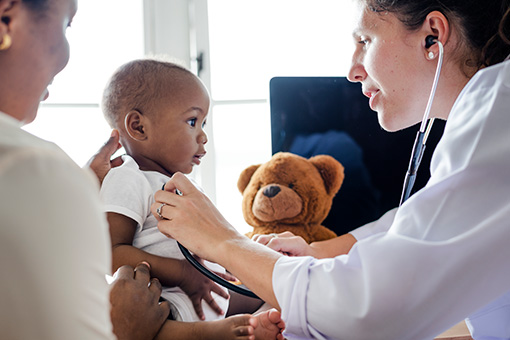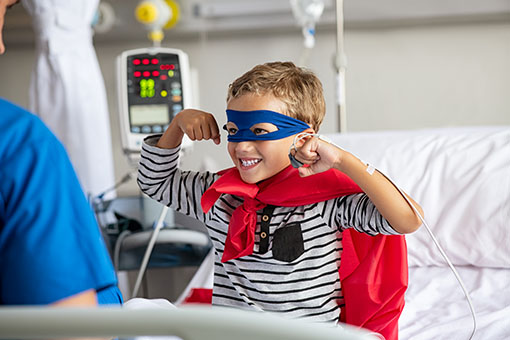Symptoms and diagnosis
Paediatric Chordoma Guide
It’s likely that your child went through a number of tests and investigations to receive their diagnosis of chordoma.
The first step in diagnosing chordoma is often a trip to the GP because of signs or symptoms. In your child, these may have included headaches or neck pain, changes to facial movements and/or vision problems, or they may have had bladder or bowel issues. Or, they may have had none of these – symptoms are very dependent on the location of the chordoma.
In very young children, signs and symptoms can be difficult to recognise, but it may have been that your child was more fussy or aggravated than usual, perhaps over an extended period of time.
When diagnosing chordoma, doctors need to eliminate other potential diseases or conditions, which may have similar signs, symptoms or diagnostic appearance to chordoma. This is why it can sometimes take a long time to confirm a diagnosis of chordoma.
Its rarity, particularly in children, can also mean doctors are unlikely to suspect chordoma as a potential diagnosis in the first instance.
This page features content originally published by The Chordoma Foundation and is reproduced with permission: “Diagnosing chordoma”
Words in bold are explained in a glossary.
Paediatric Chordoma Guide

Gaining a definitive diagnosis
Following a physical examination and blood tests to rule out other possible diagnoses, it is very common to be referred to a bone cancer specialist for a second opinion and confirmation of the diagnosis (see more about specialist centres in the Treatment section).
Imaging tests such as CT (computerised tomography), PET (positron emission tomography) and/or MRI (magnetic resonance imaging) scans can provide useful information on the exact location of the chordoma but cannot definitively diagnose it.
A biopsy is needed to definitively confirm the diagnosis of chordoma. A biopsy is a specialist procedure that takes a small sample of the affected bone, so it can be examined under a microscope by a type of doctor called a pathologist. A needle biopsy is done most frequently, which requires the insertion of a very fine needle into the affected bone tissue to draw out a small sample for examination.
One of the proteins the pathologist will be looking for is brachyury, which helps them distinguish chordoma from other types of cancers. The test undertaken to detect brachyury is known as immunohistochemistry (performed in the pathology lab).
Immunohistochemistry is also used to test for INI-1 loss, which helps to determine the subtype of chordoma (see the What is chordoma section for more information on the INI-1 protein). Testing for INI-1 is very important in children because INI-1 negative chordoma is more common in children, and different treatment options may be recommended for this type of chordoma.
Results from a biopsy can take up to two weeks to analyse but they should enable doctors to confirm the presence and specific type of chordoma.

